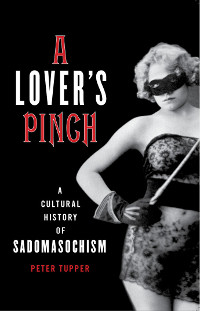Martin, Charles D. The While African American Body. Amazon
There’s a “missing link” I still need to find, the historical point at which people started thinking about white people as slaves. I found it, or one point of it, in the eroticized parodies of mid-19th century slave narratives published in the late 19th century. I still need to find more evidence to strengthen this point, where black shades into white.
Martin’s book explores this strange borderland between the races. Europeans were fascinated by “white negroes” or “leopard children” in scientific or entertainment venues, which could be Africans with conditions like albinism or vitiligo, or Africans in partial or total whiteface, or white people with partial blackface. The separation of the sign (“white skin”) from the signified (the social construction of “whiteness”) was both fascinating and terrifying, particularly to new American immigrants who were not secure in their “whiteness”.
Continue reading »


